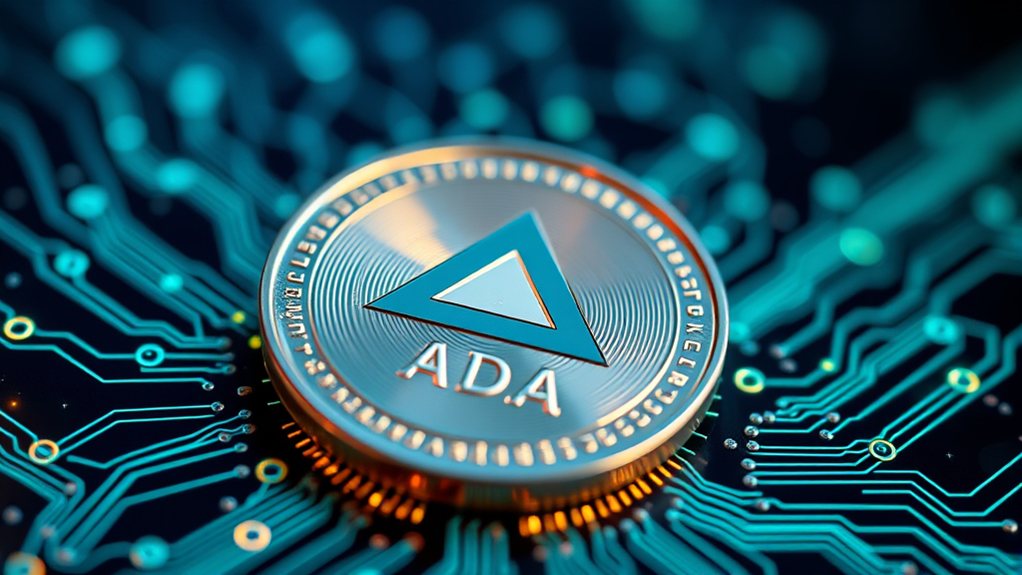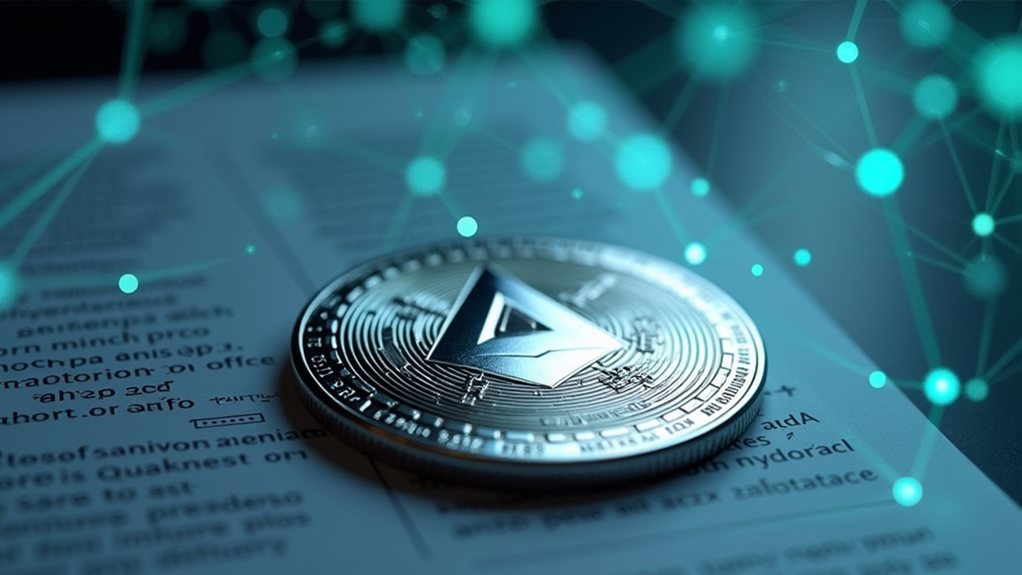ADA is the native digital currency of the Cardano blockchain platform, launched in 2017 by Ethereum co-founder Charles Hoskinson. It operates on a proof-of-stake consensus mechanism called Ouroboros, which uses less energy than Bitcoin's system. ADA serves as a payment method, allows holders to stake coins for rewards, and provides voting rights for platform governance. The cryptocurrency has a maximum supply of 45 billion coins and competes with other smart contract platforms. The following sections explore ADA's unique features in depth.

ADA crypto stands as the native digital currency of the Cardano blockchain platform. Named after Ada Lovelace, a 19th-century mathematician considered by many to be the first computer programmer, ADA was launched in 2017. Charles Hoskinson, one of Ethereum's co-founders, created Cardano as a third-generation blockchain solution that addresses issues faced by earlier cryptocurrencies.
ADA represents Cardano's innovative answer to early blockchain limitations, developed by Ethereum co-founder Charles Hoskinson.
The cryptocurrency runs on a proof-of-stake consensus mechanism called Ouroboros. This system allows ADA holders to stake their coins, helping secure the network while earning rewards. Unlike Bitcoin's energy-intensive mining process, Cardano's approach uses considerably less power. The platform features a two-layer architecture, separating transaction settlements from computation tasks for better efficiency. Cardano's layered architecture improves scalability while maintaining robust security protocols. Much like Ethereum's transition to proof-of-stake, Cardano's design significantly reduces energy consumption compared to traditional blockchain networks.
ADA serves multiple functions within the Cardano ecosystem. It works as a digital currency for payments and value transfers. Users can stake their ADA to participate in network security. It also functions as a governance token, giving holders voting rights on proposed changes to the network. Additionally, ADA powers smart contracts and decentralized applications built on the platform.
The cryptocurrency has a maximum supply cap of 45 billion coins, with about 35 billion already in circulation as of 2023. This controlled supply aims to prevent inflation while ensuring enough tokens exist for the network's needs. Some ADA remains in treasury reserves to fund ongoing development and community initiatives.
Cardano distinguishes itself through its academic approach. The platform relies on peer-reviewed research and formal methods to implement changes. Written in Haskell, a programming language known for reliability, Cardano emphasizes security and sustainability. This methodical development process sometimes moves slower than competitors but aims for greater stability. Since its launch, Cardano has undergone four notable hard forks including Shelley, Alonzo, Vasil, and Valentine.
In the cryptocurrency market, ADA consistently ranks among the top digital assets by market capitalization. It reached an all-time high price of $3.10 in September 2021 but experiences volatility typical of crypto markets. ADA's price often correlates with broader market trends while also responding to Cardano's development milestones.
The Cardano ecosystem involves several organizations. The Cardano Foundation oversees protocol development, while IOHK (Input Output Hong Kong) leads technical implementation. Emurgo supports commercial adoption. Together with an active community of developers and stake pool operators, they work to advance the platform.
ADA competes directly with other smart contract platforms like Ethereum, Solana, and Polkadot. It offers lower transaction fees compared to pre-upgrade Ethereum and higher theoretical transaction capacity than Bitcoin. As blockchain technology continues evolving, ADA remains positioned as a technically sophisticated cryptocurrency with a focus on scalability, interoperability, and sustainable growth.
Frequently Asked Questions
How Does ADA Staking Work and What Rewards Can I Expect?
ADA staking allows holders to earn rewards while keeping coins in their wallet.
There's no lock-up period, and a minimum of just 2 ADA is needed. Users delegate to stake pools through wallets like Daedalus or Yoroi.
Rewards are distributed every 5 days, with average returns of 4-6% annually. The first rewards arrive after 15-20 days, and they're automatically re-staked for compound growth.
Can Cardano Smart Contracts Compete With Ethereum's Capabilities?
Cardano's smart contracts can compete with Ethereum, but with different strengths.
Cardano offers lower fees, better energy efficiency, and formal verification for enhanced security. While Ethereum has a head start with more developers and applications, Cardano's extended UTXO model and Plutus language provide technical advantages.
The platform's growing ecosystem includes thousands of smart contracts, DeFi projects, and NFTs.
Both networks serve different needs in the blockchain space.
What Impact Do Hoskinson's Decisions Have on Ada's Value?
Charles Hoskinson's decisions as Cardano's founder greatly impact ADA's value. His technical roadmap choices affect investor confidence.
When he announces partnerships or development milestones, ADA prices often respond immediately. His public statements on social media can cause price volatility.
Hoskinson's leadership reputation influences institutional investment decisions. His long-term vision for Cardano's real-world utility ultimately shapes ADA's market position against competing cryptocurrencies.
How Does Ada's Regulatory Compliance Compare to Other Cryptocurrencies?
ADA's regulatory approach stands out among cryptocurrencies.
It's more proactive than Bitcoin and many altcoins through its robust KYC infrastructure and Atala Prism identity solution.
Unlike Ripple, which faced SEC lawsuits, Cardano has worked to engage regulators early.
Its Proof-of-Stake consensus also addresses environmental concerns that regulators have raised about Bitcoin.
However, ADA still faces regulatory uncertainty in markets like the US.
What Partnerships Are Advancing Cardano's Real-World Adoption?
Cardano's real-world adoption is advancing through diverse partnerships. The Ethiopian Ministry of Education uses blockchain for student credentials, while the Georgian government tracks wine exports.
Financial sector allies include Grayscale Investments and Lenfi Protocol. In supply chains, Scantrust and Beefchain provide traceability solutions.
Technology partnerships with FC Barcelona and Petrobras extend blockchain applications to sports and energy. These collaborations span government, finance, agriculture, and technology sectors.










